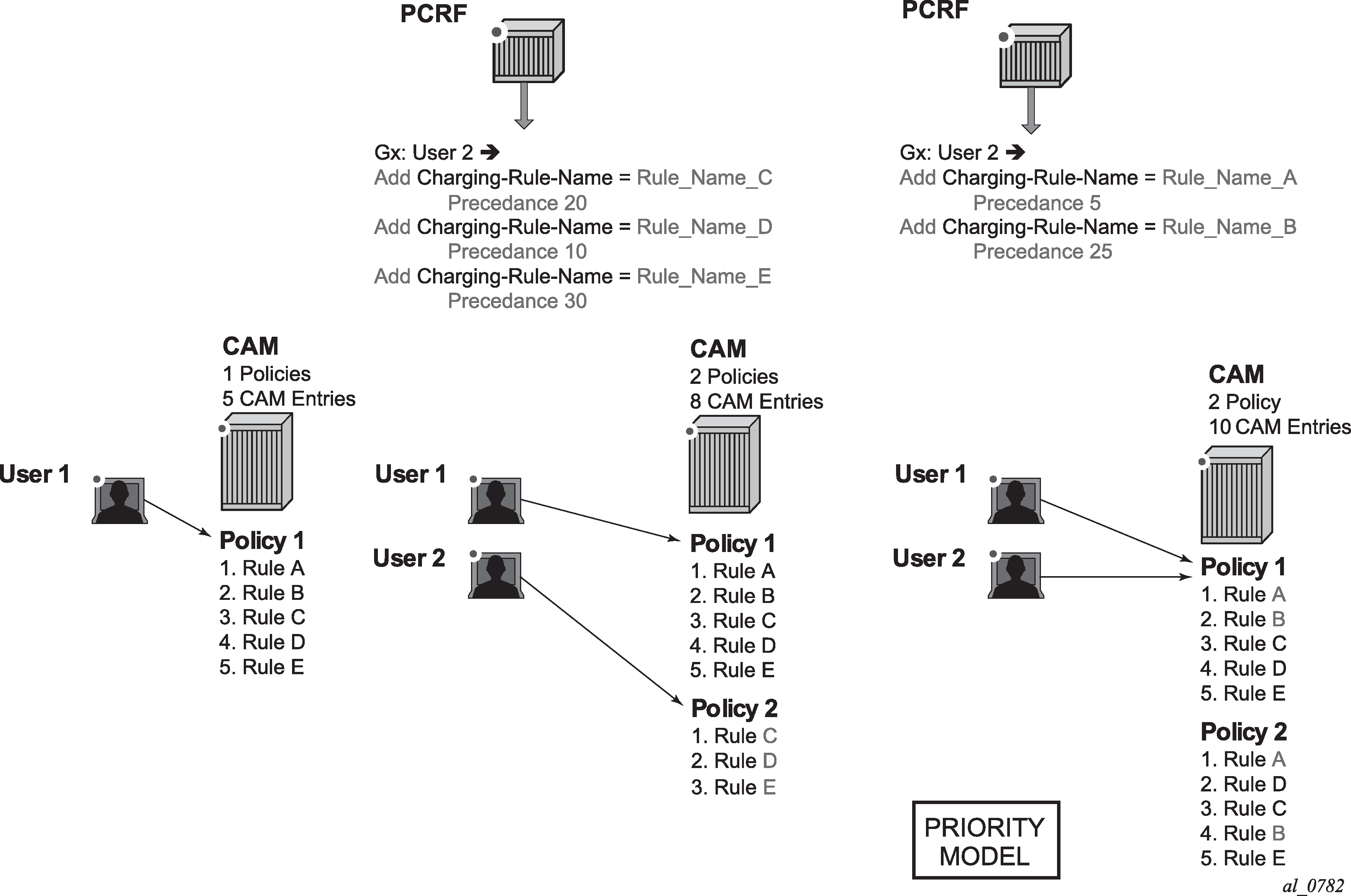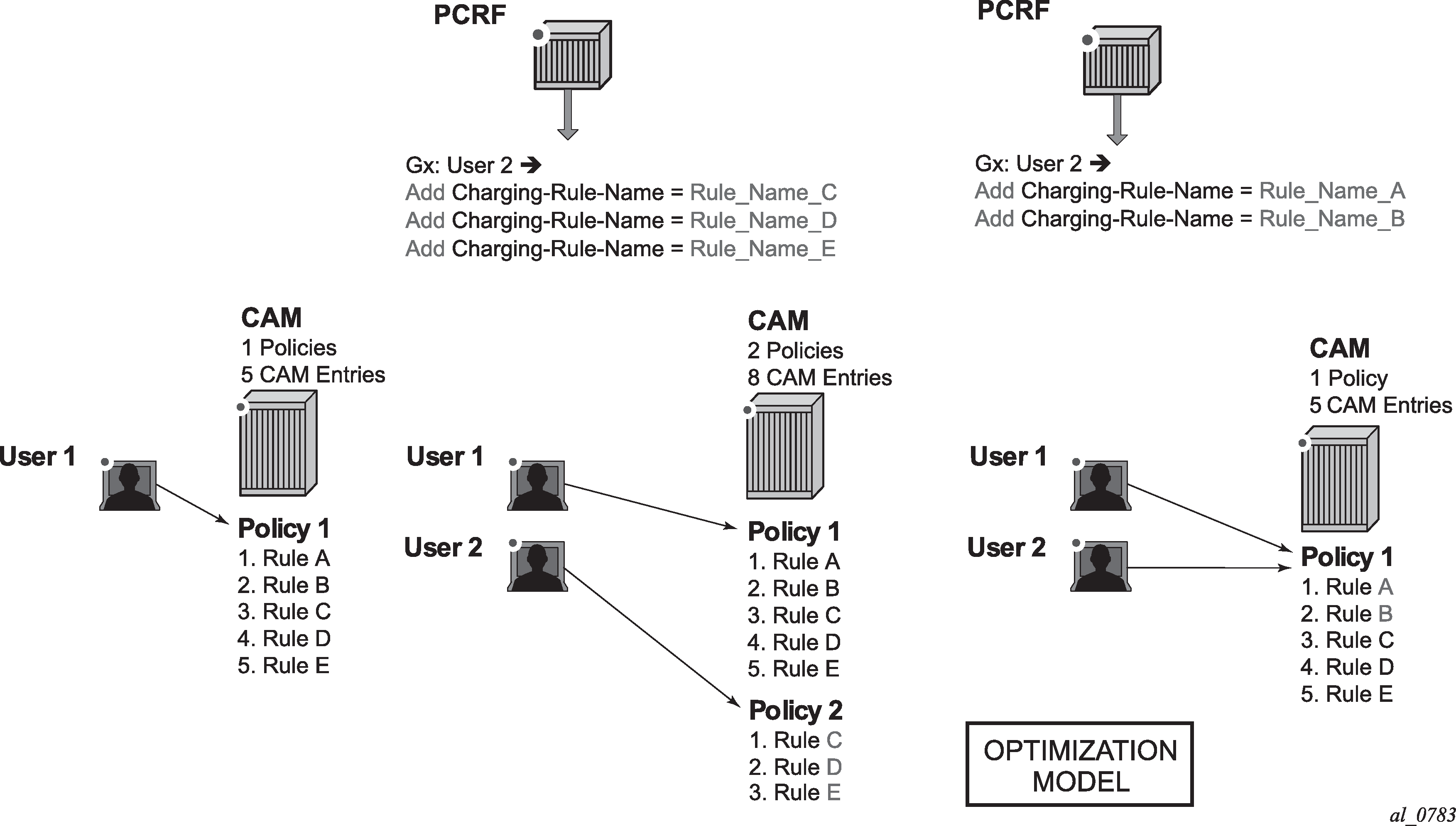Entries in IPv4/v6 filter and QoS policy created via CLI are ordered according to the numerical value associated with each entry command (which corresponds to the match condition) within the policy. CLI rules can be re-ordered with the renum command (in filters and QoS policies).
On the other hand, the PCC rules are ordered in one of the two ways. The difference between ordering of the entries with the rules, and the ordering of the rules themselves is:
PCC rules are prioritized according to the Precedence AVP within the Charging-Rule-Definition AVP. They are inserted within the subscriber-host policy, according to the Precedence AVP relative to the other PCC rules already applied to the subscriber-host. A PCC rule with a lower Precedence value is applied before a rule with a higher Precedence value.
The ordering behavior according to the Precedence is shown in Figure: PCC rule ordering - priority model.
Figure: PCC rule ordering - priority model
Automatic optimization of PCC rules. Automatic optimization is used in cases where the PCC rule order is not important to the operator. Then, the node optimizes the rule ordering to achieve the best possible scale by maximizing rule sharing. This optimization (or internal rule ordering) is performed for PCC rules without the Precedence AVP, or for PCC rules with the same Precedence value.
The premise of the automatic rule optimization is shown in Figure: PCC rule ordering - priority model.
Figure: Rule ordering - optimization model
The ordering of PCC rules has no effect on the ordering of the static entries in the base qos-policy or filter.
Mixing of the PCC rules with the Precedence AVP and without Precedence AVP is allowed for the same subscriber-host. PCC rules without the Precedence AVP are inserted at the end of all PCC rules that do have the Precedence value set explicitly. In other words, the Precedence value for PCC rules without the explicitly configured Precedence AVP is assumed to be the highest. The PCC rules without the Precedence value are automatically inserted at the bottom of the PCC rule range.
A distinction should be made between the order of PCC rules in a PCC rule set and the order between the entries within each PCC rule. A PCC rule contains a group of classifiers that are all associated with the same actions. Therefore, the order of the entries (equivalent to match conditions) within any specific PCC rule does not matter (all entries result in the same action). For this reason, PCC rules with identical name and identical entries but different order of the entries are automatically ordered in a way that would allow more optimal sharing of the rules between different subscribers.